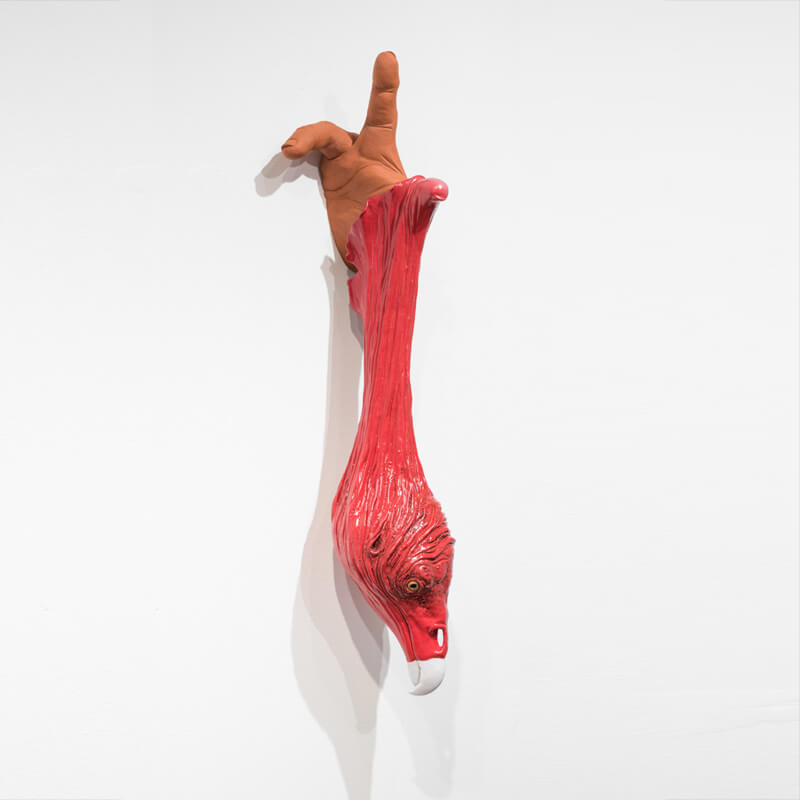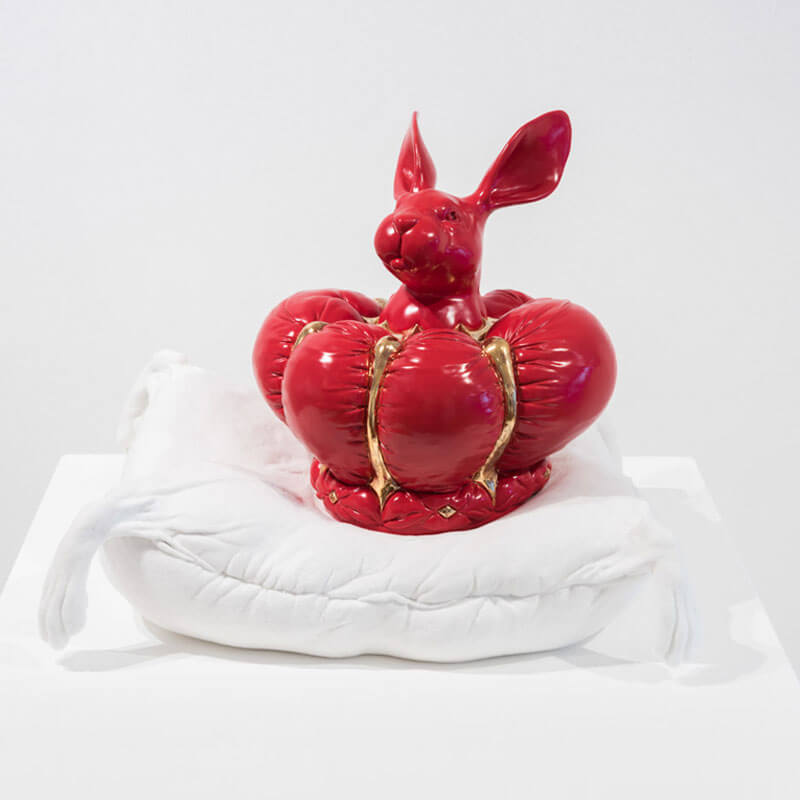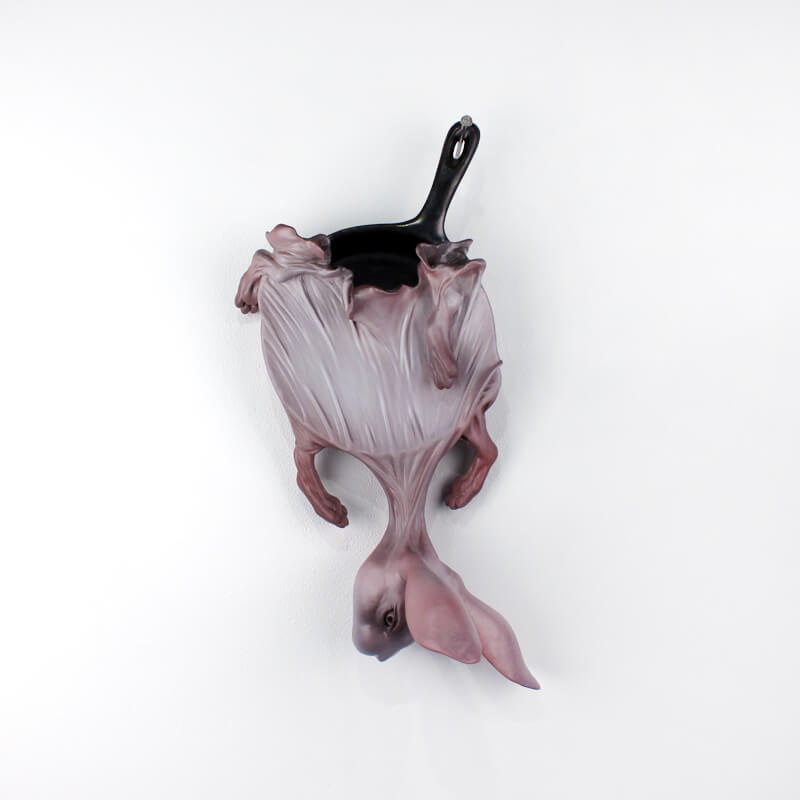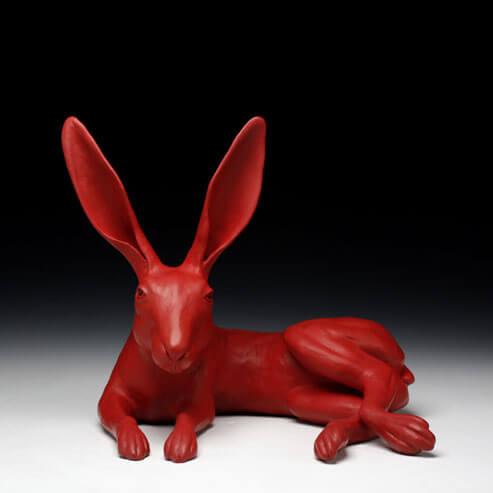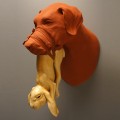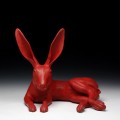
Red Lodge Clay Center – Short-Term Resident (AIA) 2022, Short-Term Resident 2010, Workshop Presenter 2019
I was raised on the outskirts of Palm Springs, California in what we called the “boonies”. We had only three channels on the TV and they came in fuzzy. There wasn’t much to do but wander the desert with my .22 caliber rifle, shooting things, mostly jackrabbits and cottontails.
My dad was a gardener to the stars and the elite of Palm Springs, California. In my formative years, I mowed the lawns of Steve McQueen, Ally McGraw, Barry Manilow, Liberace, and others. The architecture of most of these houses was mid-century modern and at the time I didn’t appreciate being intimate with these spaces that were designed by famous and architects such as John Lautner and Hugh Kapture. Looking back, there might be a relationship between my interest in art-making and my early life experiences with the line, pattern, and texture of these stunning built environments.
Coming from a blue-collar background, I assumed I would be doing some form of manual labor since I was raised to believe that true manhood and labor go hand in hand. Even though I wasn’t raised to think of academics as a viable option, I went to college anyway. There, I took a ceramics class and that changed everything.
That first class was the beginning of an art-filled life that includes experiences and relationships with the creative class that I never could have imagined as a kid when shooting rabbits and mowing lawns.
In 2001 we moved to Toquerville, Utah, a small town amid the red desert landscape of Southern Utah. Our house sat on the road to Zion National Park and the plan was to make pottery to sell to the passing tourists. We were so busy that I couldn’t make work fast enough to keep up with the demand. I was also making sculpture, but never had enough time or energy to do both. In 2008 the recession took a toll on the demand for pottery which was a good excuse to abandon pottery to devote all my studio practice to sculpture.
At about the same time, I started teaching at Southern Utah University as an adjunct professor. After three years of teaching, the position opened up to full time, tenure track status. Seven years later, I was awarded tenure and promoted to Associate Professor of Art at Southern Utah University.
We have since sold the house in Toquerville and moved to Cedar City, closer to SUU. Now I walk to class and enjoy all the intellectual benefits of living near a University.
I am interested in the relationship between sculpture and literature. What are the ways in which the additive and subtractive nature of writing relates to the same process as sculpture making? What are the connections between the visual and the literary arts? Do they both create a psychological impact on the audience through similar cognitive channels? Both the visual and literary arts have the task of getting into the minds of people. The literary arts are ephemeral, they work when they get into the minds of readers and are then decoded. The visual arts deals with materiality, shape and surface. Are there more barriers to accessing the metaphorical minds and consciousness of the viewer when one deals with material? As a visual artist, I am curious whether the same narrative and story telling rules apply to both.
I tell visual stories with the use of animal imagery. In my work I wrestle with existential questions of life and death through the symbolism of the body and animals. My intensely saturated ceramic figures represent the decadence of worldly pleasures, a vibrant source of energy that is antithetical to death and dying. It is through embracing life and living that the pull of death and suffering is kept at a distance. Like Aesop’s Fables, animals such as dogs, rabbits, crabs, monkeys and frogs provide a vehicle to express the human condition. Animal imagery is the beginning of a deeper understanding of humanity.




